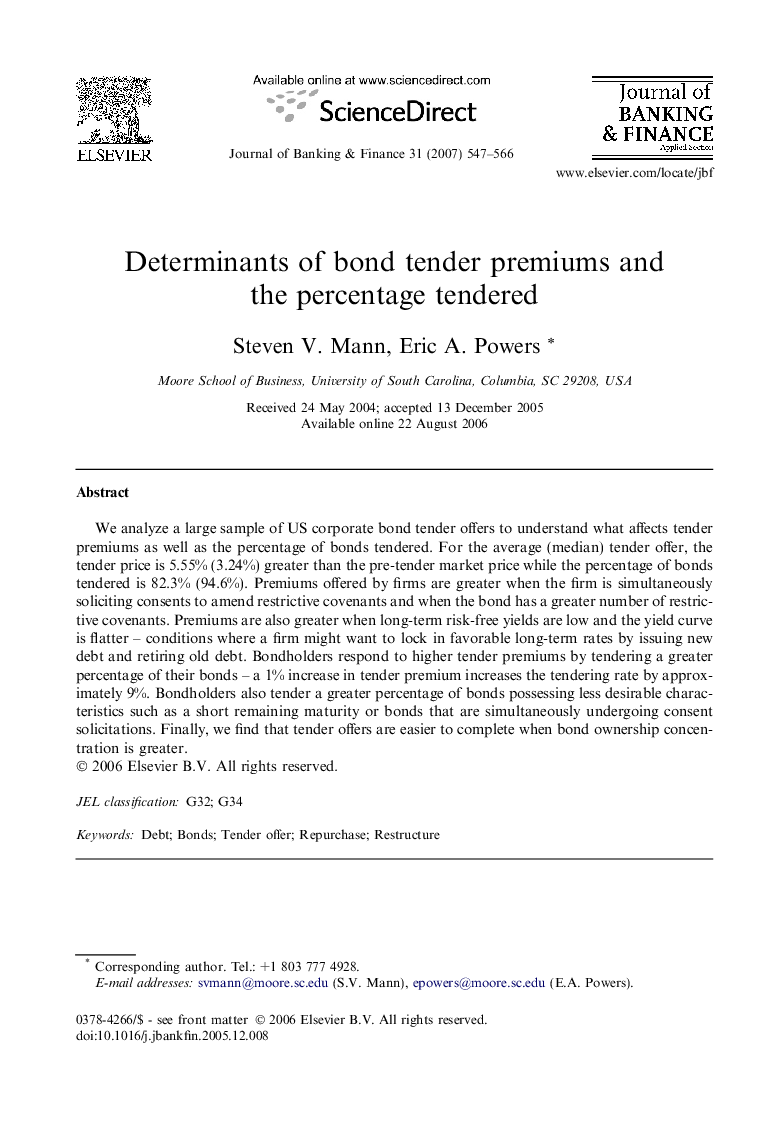| Article ID | Journal | Published Year | Pages | File Type |
|---|---|---|---|---|
| 5091367 | Journal of Banking & Finance | 2007 | 20 Pages |
Abstract
We analyze a large sample of US corporate bond tender offers to understand what affects tender premiums as well as the percentage of bonds tendered. For the average (median) tender offer, the tender price is 5.55% (3.24%) greater than the pre-tender market price while the percentage of bonds tendered is 82.3% (94.6%). Premiums offered by firms are greater when the firm is simultaneously soliciting consents to amend restrictive covenants and when the bond has a greater number of restrictive covenants. Premiums are also greater when long-term risk-free yields are low and the yield curve is flatter - conditions where a firm might want to lock in favorable long-term rates by issuing new debt and retiring old debt. Bondholders respond to higher tender premiums by tendering a greater percentage of their bonds - a 1% increase in tender premium increases the tendering rate by approximately 9%. Bondholders also tender a greater percentage of bonds possessing less desirable characteristics such as a short remaining maturity or bonds that are simultaneously undergoing consent solicitations. Finally, we find that tender offers are easier to complete when bond ownership concentration is greater.
Related Topics
Social Sciences and Humanities
Economics, Econometrics and Finance
Economics and Econometrics
Authors
Steven V. Mann, Eric A. Powers,
